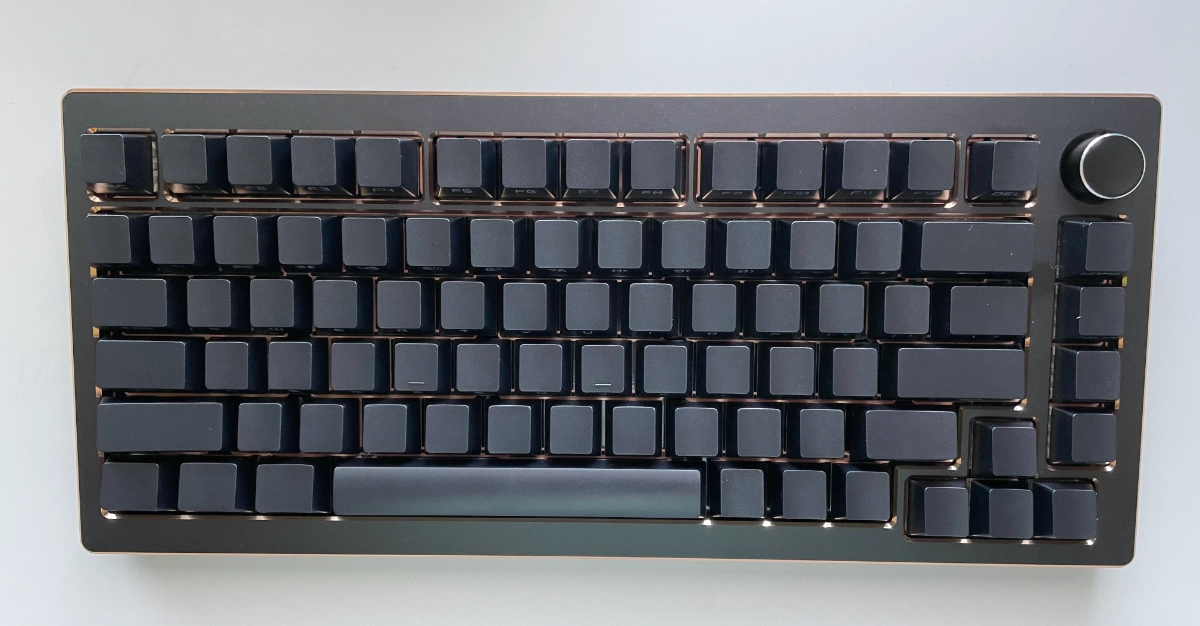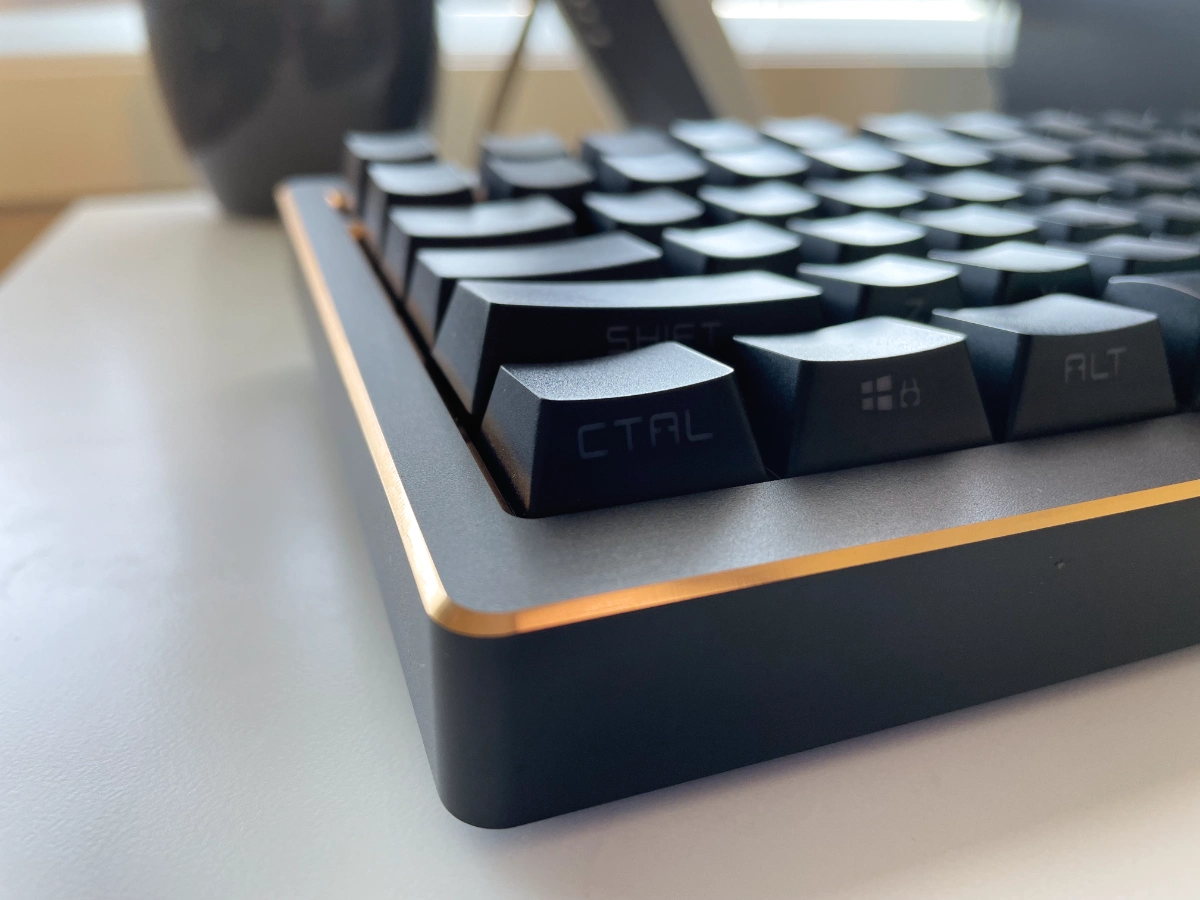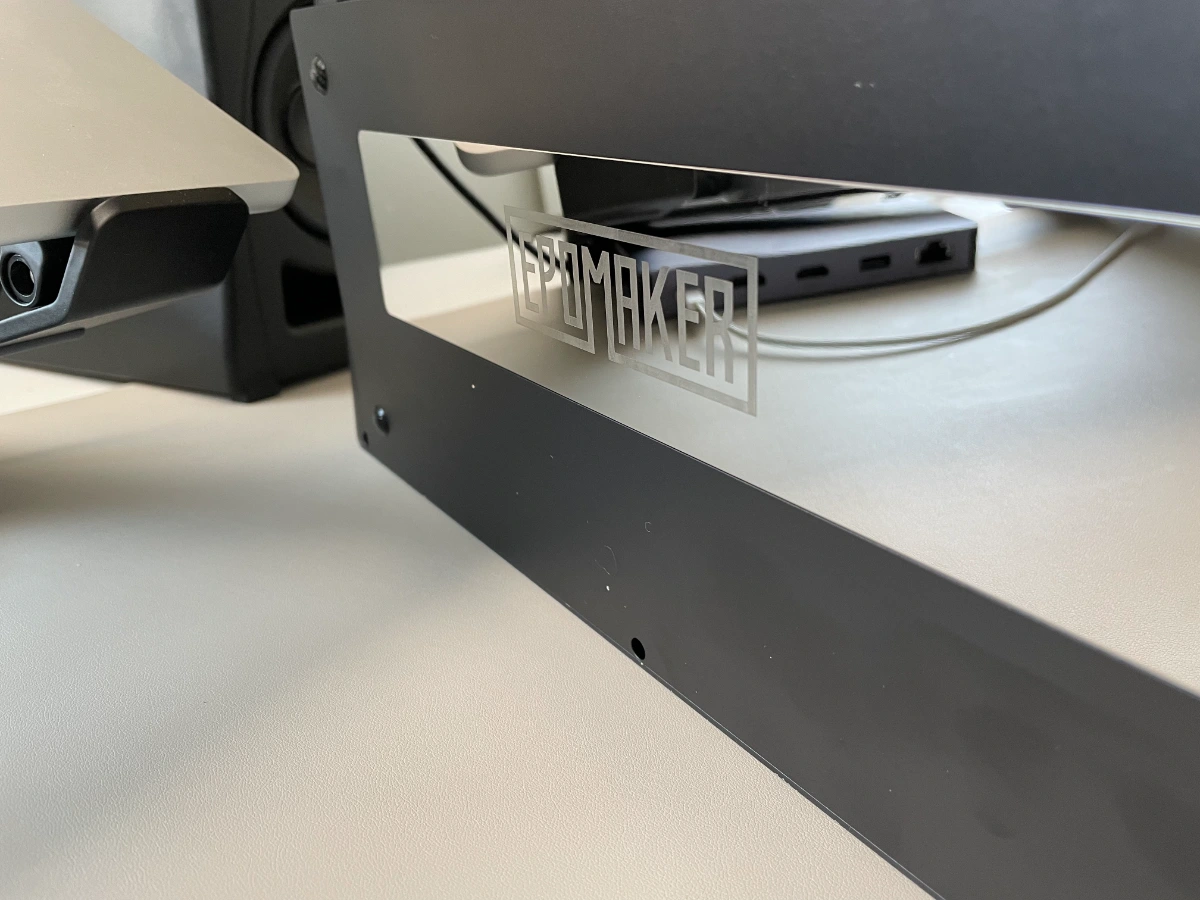© ROOT-NATION.com - Use of content is permitted with a backlink.
Keyboards are fun. For some reason. Only a decade or so ago, they were mostly utilitarian, but now, I sometimes get two or even three models to review in a month. All of them try to be different, a little bit more fun. All of them feel different to type on. They use different software, various switches, RGB modes, and so on. This month, Epomaker, a well-known keyboard brand, released a new compact full aluminum construction model that might be my favourite this year.

Design
Looking at the renders, the Epomaker Tide75 looks like a typical modern keyboard. The 75% layout has been growing in popularity, and the Tide75 has everything you might expect: a full-function row, a rotary dial button, RGB, Bluetooth support, etc. Its main feature is the full aluminum construction.
When I first took it out of the box, I was wowed by its sheer weight. It’s HEAVY and feels incredibly sturdy. It impressed on my table like a bona fide Mjölnir, feeling pleasantly immovable. Try to bend it, I dare you.

It’s hard to explain just how classy it looks. The full-metal construction, the weightiness (1.8 kg!) of it, the copper sheen it gives off at the edges. It looks great in any setup, whether you’re a gamer or a freelancer. I absolutely adore the way the black model looks. You can choose from electrophoretic (Blue) or anodized (Black/Purple/Pink) finishes.
There’s not much to describe: the keyboard has one USB-C port for charging and connecting to your computer, and one unmarked switch for turning it on. It also has a hidey-hole for the dongle.
Read also: HHKB Studio review: Forget everything you knew about keyboards
Typing feel
We can admire the way the Epomaker Tide75 looks for as long as we want, but it does not matter much if typing on it is not pleasant. Equipped with the Epomaker Lemon switch, this keyboard offers a unique addition to Epomaker’s switch collection. The Lemon switch, not sold separately and exclusive to this keyboard, is a linear 5-pin switch with a medium-low actuation travel distance of 1.6mm.
The Lemon switches are clicky and light, offering almost no resistance. I find them immensely fast, making me type faster than I did in a long time. They passed the “wife test,” too: even when typing late at night, I never disturbed her sleep. They keycaps are a bit thin for my taste though — I would have liked something more substantial, especially for this model.

The relative quiet is the work of five layers of sound-dampening materials: Poron PCB-plate foam, IXPE switch foam, PET noise cancellation pad, Poron case foam, and PET insulation pad. The sound, along with the feel, make this a true all-rounder.
The rotary dial button has become a staple of modern keyboards, and I am all for it. The dial feels like it’s made out of aluminum, too, and is great to use. By default, clicking on it mutes the sound, but I rebinded it to play/pause.
The hot-swappable PCBs allow you to conveniently swap switches without any soldering. The package contains a USB-A to USB-C cable, a keycap and switch puller tool, and an Allen wrench to access the keyboard’s internals.
Read also: Logitech Casa Pop-Up Desk review: It’s weird, but it works

Software
There’s not much to say about the software: Epomaker Tide75 works well with VIA which lets you rebind the keys and change some settings. There’s no proprietary software of any kind.
Before VIA recognized my keyboard, I had to import its JSON file and modify the settings. While I’m glad Epomaker is supporting a leading configuration app for keyboard fans like myself, I’d much prefer if they used their own software. They have the Epomaker Driver, so why isn’t it available for every keyboard, including this one?
Verdict
It’s not easy to impress me with a keyboard nowadays, but the Epomaker Tide75 managed to leave a lasting impression due to its classy design. Metal-clad and battle-ready, it’s a fantastic tool for mechanical keyboard enthusiasts. At $139.99, the current price of the Tide75 is both fair and on par with its competitors.

